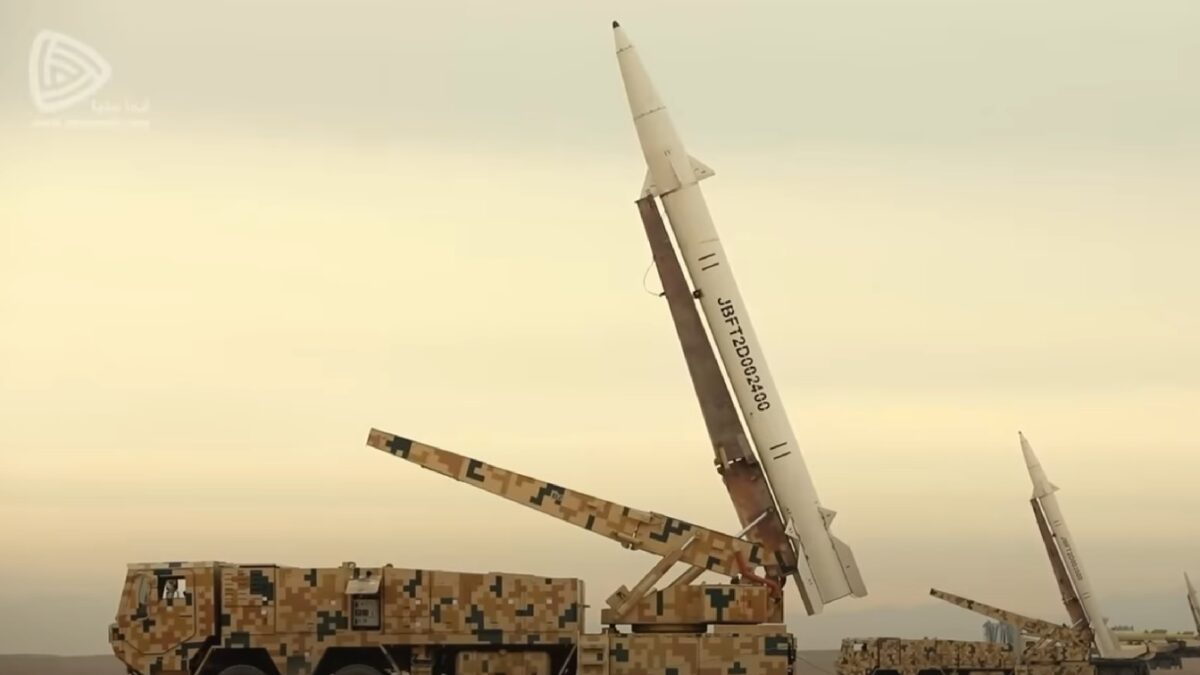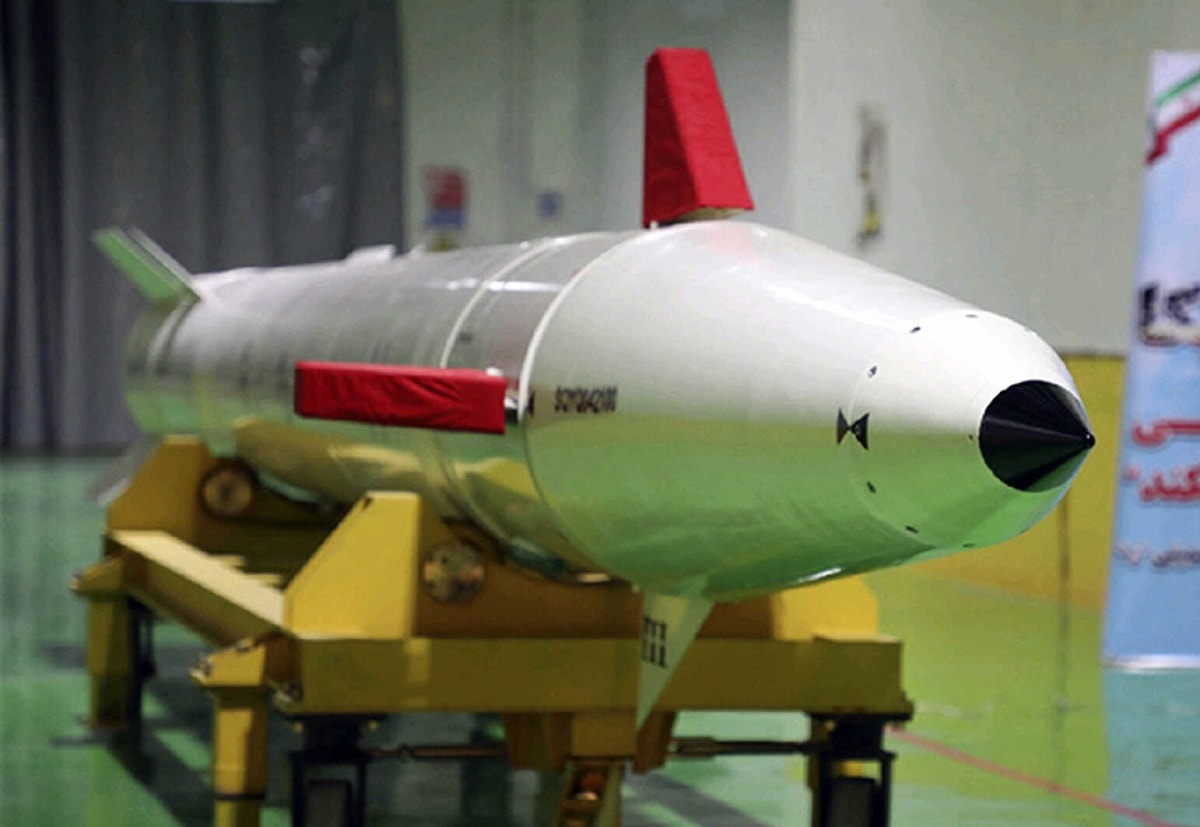Iran is rapidly accelerating its space efforts, according to the head of the Islamic Revolutionary Guard Corps (IRGC) Aerospace Force.
Over the weekend, Amir Ali Hajizadeh announced that the Iranian regime was determined to put more satellites into space. The Iranian-state-run media outlet Tasnim News Agency recounted the Aerospace commander’s claims regarding the IRGC’s advancements in drone and unmanned aircraft technologies.
Want more 19FortyFive military, defense, and national security, as well as politics and economics analysis from the best experts on Earth? Follow us on Google News, Flipboard, YouTube, Facebook, Twitter, and Linkedin. Also, sign up for our newsletter here. You can also find our code of publishing ethics and standards here. Want to contact us? Email: [email protected].
Hajizadeh threatened that these achievements could be weaponized to “hit the enemy” at a distance of 1,500 kilometers if necessary. The West is fearful that the technology Iran uses to launch satellite-carrying rockets could be repurposed to eventually carry nuclear warheads.
Iran and That November Space Launch
Earlier this month, the IRGC’s Aerospace division launched a new satellite-carrying rocket into space. According to state-run media outlets, the Ghaem-100 solid-fueled rocket was launched into orbit successfully from Earth. As Tehran’s first three-stage launch vehicle, the Ghaem will be able to place satellites weighing 80 kilograms in an orbit roughly 500 kilometers from the Earth’s surface- according to Iranian reports. While Iran insists its space efforts are solely used for civilian and peaceful purposes, Hajizadeh’s most recent threat advertising that the country’s new technology could “hit the enemy” suggests otherwise.
A Brief History of Iran’s Space Program
Although Iran’s interest in the space realm dates back to before the 1979 Islamic Revolution, the country’s efforts to advance its space program really took off in the late 1990s. Iran, together with Russia and China, collaborated to design, develop and construct various satellites. The resulting “Mesbah,” Earth observation satellite, served as the first indication that Iran was interested in developing a rocket capable of launching a vehicle into orbit. By 2003, the Iranian Space Agency was established, which remains the country’s main division responsible for carrying out the state-run space program. Two years ago, the IRGC-linked Self-Sufficiency Jihad Organization (SSJO) launched Tehran’s first inter-continental missile technology. In a 2005 joint project with the Kremlin, the Sina-1 became the first domestically made satellite Iran launched successfully into orbit.
Solid-fuel Rockets Bode Well for Iran’s Space and Ballistic Missile Programs
Over the previous decade, the IRGC’s Aerospace Force has become increasingly focused on developing solid-fuel rockets, which pose a more significant threat to its adversaries since the rockets can be more easily converted into missiles. Although satellite carriers primarily use liquid fuel, solid-fuel rockets are a great alternative since they can be adapted for mobile launchers.
In June, Iran tested its Zuljanah satellite launcher for a second time. The Satellite Launch Vehicle was initially unveiled in 2021 and is considered to be Iran’s first domestically-manufactured hybrid fuel SLV. While Iran currently does not have any ballistic missiles that feature a range long enough to reach the majority of Europe, the Zuljanah rocket “could be used in a future ICBM to deliver payloads of about 500 kilograms to ranges of at least 4,000 kilometers- far enough to reach all of Europe- if Iranian officials decide to move forward with the development of such a weapon,” as described by The Jerusalem Post.
Russian-Iranian Collaboration Continued this Summer
This past summer, Moscow launched the Iranian “Khayyam” satellite into orbit from Kazakhstan in a display of the two rogue states’ recent military cooperation. Equipped with dual-use applications, the Khayyam could potentially be harnessed by both the Iranian regime and the Kremlin to spy on their neighbors. Specifically, Russia could utilize the Khayyam’s data to support its war efforts in Ukraine while Iran could monitor the region to back the activities of its region-wide proxies.

Iran Missiles from Video. Image Credit: YouTube Screenshot.
While a litany of failed launches and exaggerated technology claims often delude Iran’s frequent announcements, the regime’s focus on expanding its ballistic missiles program is troubling. Iran has displayed a sharp uptick in hostile behavior across the regime, making its SLV obsession more pertinent than ever.
Maya Carlin is a Middle East Defense Editor with 19FortyFive. She is also an analyst with the Center for Security Policy and a former Anna Sobol Levy Fellow at IDC Herzliya in Israel. She has by-lines in many publications, including The National Interest, Jerusalem Post, and Times of Israel.

